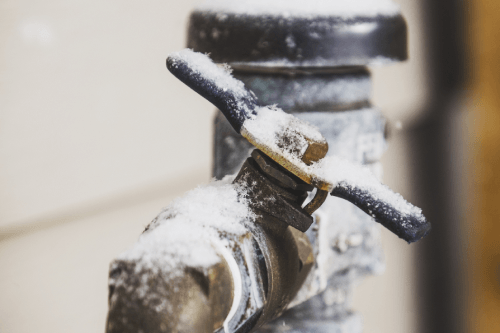What're your thoughts concerning 6 Ways to Prevent Frozen Pipes?

Winter can damage your plumbing, particularly by freezing pipelines. Right here's how to stop it from occurring and what to do if it does.
Introduction
As temperatures decrease, the risk of frozen pipelines rises, possibly bring about pricey fixings and water damages. Recognizing just how to avoid icy pipes is essential for house owners in cold environments.
Comprehending Frozen Pipelines
What triggers pipelines to ice up?
Pipelines freeze when revealed to temperatures listed below 32 ° F (0 ° C) for extended durations. As water inside the pipelines freezes, it broadens, taxing the pipe walls and potentially creating them to break.
Dangers and problems
Icy pipelines can cause water system disturbances, residential or commercial property damages, and costly repair work. Ruptured pipelines can flood homes and create substantial structural damage.
Indicators of Frozen Water Lines
Identifying icy pipes early can stop them from bursting.
Just how to recognize frozen pipelines
Look for reduced water circulation from faucets, unusual smells or sounds from pipelines, and visible frost on subjected pipes.
Prevention Tips
Insulating vulnerable pipelines
Wrap pipes in insulation sleeves or make use of warmth tape to protect them from freezing temperatures. Concentrate on pipelines in unheated or outside areas of the home.
Home heating methods
Maintain indoor rooms properly warmed, especially areas with pipes. Open closet doors to permit cozy air to flow around pipelines under sinks.
Safeguarding Outdoor Plumbing
Garden hoses and outdoor taps
Disconnect and drain pipes yard hose pipes prior to winter. Install frost-proof faucets or cover outdoor taps with insulated caps.
What to Do If Your Pipes Freeze
Immediate actions to take
If you presume icy pipelines, maintain taps available to ease stress as the ice thaws. Utilize a hairdryer or towels soaked in hot water to thaw pipelines slowly.
Long-Term Solutions
Architectural changes
Consider rerouting pipelines away from outside wall surfaces or unheated locations. Add added insulation to attics, basements, and crawl spaces.
Upgrading insulation
Invest in premium insulation for pipelines, attic rooms, and wall surfaces. Proper insulation aids maintain regular temperatures and lowers the threat of frozen pipes.
Conclusion
Protecting against icy pipes needs proactive actions and quick actions. By recognizing the reasons, indications, and preventive measures, home owners can shield their pipes throughout winter.
5 Ways to Prevent Frozen Pipes
Drain Outdoor Faucets and Disconnect Hoses
First, close the shut-off valve that controls the flow of water in the pipe to your outdoor faucet. Then, head outside to disconnect and drain your hose and open the outdoor faucet to allow the water to completely drain out of the line. Turn off the faucet when done. Finally, head back to the shut-off valve and drain the remaining water inside the pipe into a bucket or container. Additionally, if you have a home irrigation system, you should consider hiring an expert to clear the system of water each year.
Insulate Pipes
One of the best and most cost-effective methods for preventing frozen water pipes is to wrap your pipes with insulation. This is especially important for areas in your home that aren’t exposed to heat, such as an attic. We suggest using foam sleeves, which can typically be found at your local hardware store.
Keep Heat Running at 65
Your pipes are located inside your walls, and the temperature there is much colder than the rest of the house. To prevent your pipes from freezing, The Insurance Information Institute suggests that you keep your home heated to at least 65 degrees, even when traveling. You may want to invest in smart devices that can keep an eye on the temperature in your home while you’re away.
Leave Water Dripping
Moving water — even a small trickle — can prevent ice from forming inside your pipes. When freezing temps are imminent, start a drip of water from all faucets that serve exposed pipes. Leaving a few faucets running will also help relieve pressure inside the pipes and help prevent a rupture if the water inside freezes.
Open Cupboard Doors
Warm your kitchen and bathroom pipes by opening cupboards and vanities. You should also leave your interior doors ajar to help warm air circulate evenly throughout your home.

I hope you enjoyed reading our post about How to prepare your home plumbing for winter weather. Thanks so much for taking the time to browse our piece of content. Those who liked our blog post plz remember to pass it around. Thanks for being here. Revisit us soon.
Visit My Web Page